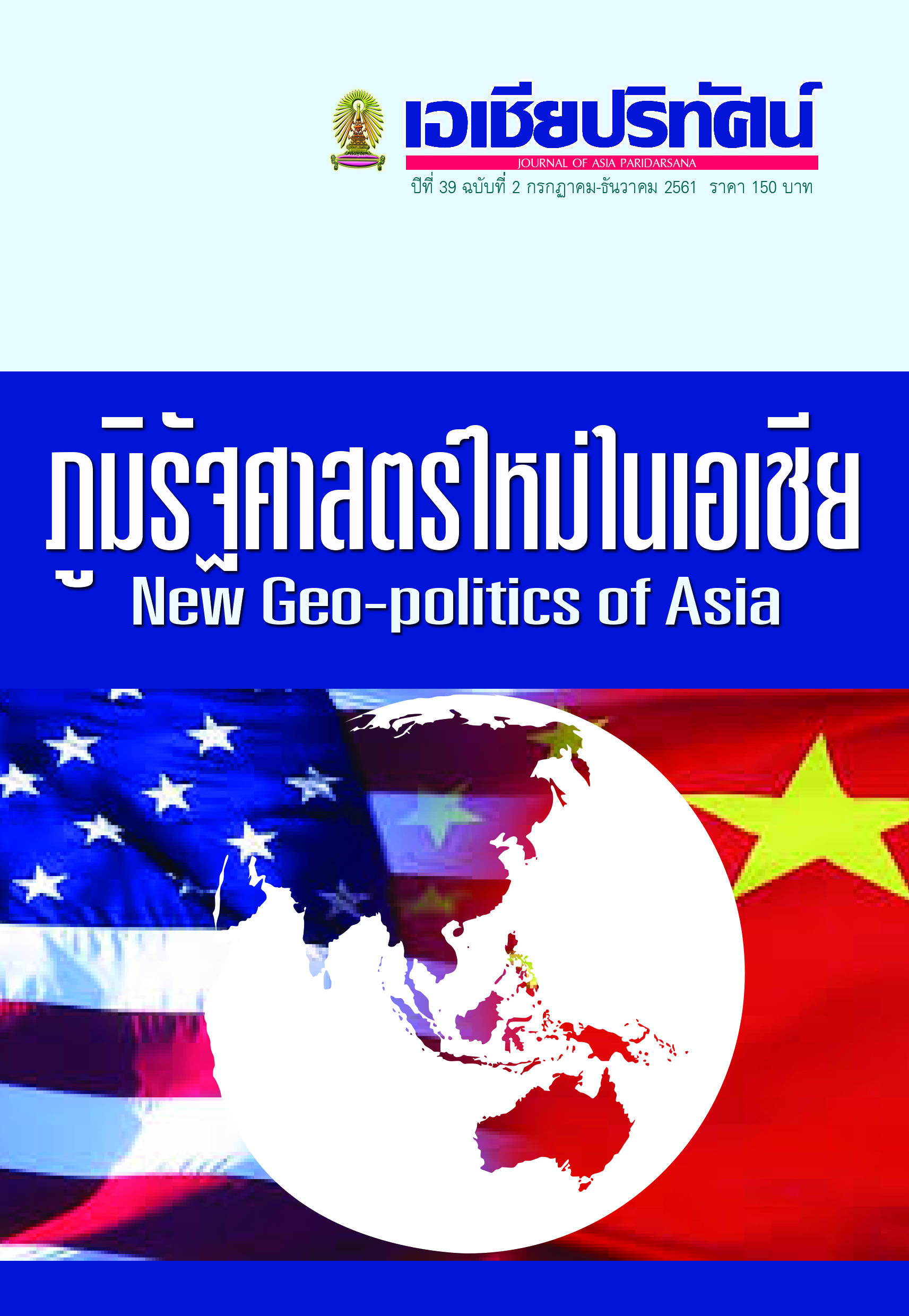ข้อริเริ่ม The Belt and Road Initiative (BRI) ของจีน: กรณีศึกษาการเชื่อมโยงโครงการ EEC
Main Article Content
Abstract
China is a rising economic power with expanding global influences in terms of both trade and investment, especially after it launched the Belt and Road Initiative (BRI). The BRI is China’s major national strategy and has been consistently pushed forward by its top leader since 2013. The Chinese leader, Xi Jinping, has initiated and used this BRI as a strategic tool to gain its national interests through economic and political power expansion all over the world. On its part, the Thai government has initiated the Eastern Economic Corridor (EEC) project, under its Thailand 4.0 strategy to boost higher economic growth and sustain the country’s long term economic development through massive infrastructure investment and also a focus on foreign direct investments with digital technology. It is expected that this EEC development zone will serve as a future technology base and as a measure to attract more high quality foreign direct investment and to raise more income for Thailand. Therefore, the Thai government has attempted to link this EEC project with China’s BRI in order to attract more investments and advanced technology from China.
This paper analyzes the possibility of China’s BRI linkages in the region with the case study of Thailand’s EEC, focusing on industry and transportation linkages. Policy recommendations to the Thai government and some concerns are also included in the final part of this paper.
Article Details
References
“รายงานการศึกษาความเหมาะสม (Feasibility Study) การจัดตั้งเขตส่งเสริม เศรษฐกิจพิเศษเขตนวัตกรรมระเบียงเศรษฐกิจพิเศษภาคตะวันออก.” 2560.
สำนักงานพัฒนาวิทยาศาสตร์และเทคโนโลยีแห่งชาติกระทรวงวิทยาศาสตร์และเทคโนโลยี, เข้าถึงเมื่อ 26 พฤษภาคม 2560. https://www. eeco.or.th/sites/default/files/รายงานการศึกษาเป็นไปได้%20EECi.pdf.
อักษรศรี พานิชสาส์น. 2558. “เส้นทางสายไหม One Belt, One Road คัมภีร์ผู้นำจีน.” กรุงเทพธุรกิจ, เข้าถึงเมื่อ 26 กุมภาพันธ์ 2558. http://www.bangkokbiznews.com/blog/detail/633823.
อักษรศรี พานิชสาส์น. 2559. “Iron Silk Road: กรณีศึกษา“รถไฟเฉิงตู-ยุโรป.” กรุงเทพธุรกิจ, เข้าถึงเมื่อ 28 มกราคม 2559. http://www.bangkokbiznews.com/blog/detail/636768.
อักษรศรี พานิชสาส์น. 2559. “ใครคือ “น้องเลิฟ” ของจีน ภายใต้ยุทธศาสตร์ The Belt and Road?.” กรุงเทพธุรกิจ, เข้าถึงเมื่อ 16 มิถุนายน 2559. http:// www.bangkokbiznews.com/blog/detail/638035.
อักษรศรี พานิชสาส์น. 2559. “ยิ่งกว่าเข็นครกขึ้นภูเขา: การเจรจารถไฟไทย-จีน.” กรุงเทพธุรกิจ, เข้าถึงเมื่อ 7 กันยายน 2559. http://pr.nrct.go.th/?p=12902&.
อาร์ม ตั้งนิรันดร. 2560. “One Belt One Road: “Marshall Plan” ของจีน?.” สำนักข่าวออนไลน์ไทยพับลิก้า ThaiPublica, เข้าถึงเมื่อ 31 กรกฎาคม 2560. https://thaipublica.org/2017/07/arm-tungnirun9/.
อาร์ม ตั้งนิรันดร. 2560. “แจ็คหม่าบุกมาเลเซีย: เกมเดิมพันของใคร?.” สำนักข่าวออนไลน์ไทยพับลิก้า ThaiPublica, เข้าถึงเมื่อ 28 มีนาคม 2560. https:// thaipublica.org/2017/03/arm-tungnirun5/.
“China stops funding CPEC road projects over graft.” 2017. The Hindu Business Line, Accessed December 5, 2018. https://www.thehindubusinessline.com/news/world/china-stops- funding-cpec-roadproject- over-graft-issuereport/article9982789.ece.
Phanishsarn, Aksornsri. 2016. “One-Belt-One-Road: The rise of China’s railway infrastructure.” Rail Professional, Accessed February 29, 2016. https://www.railprofessional.com/news/one-belt-one-road.


